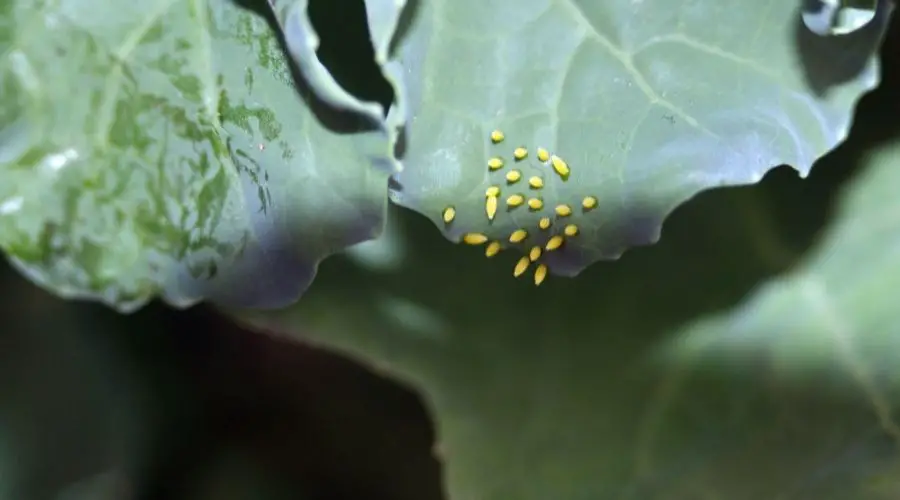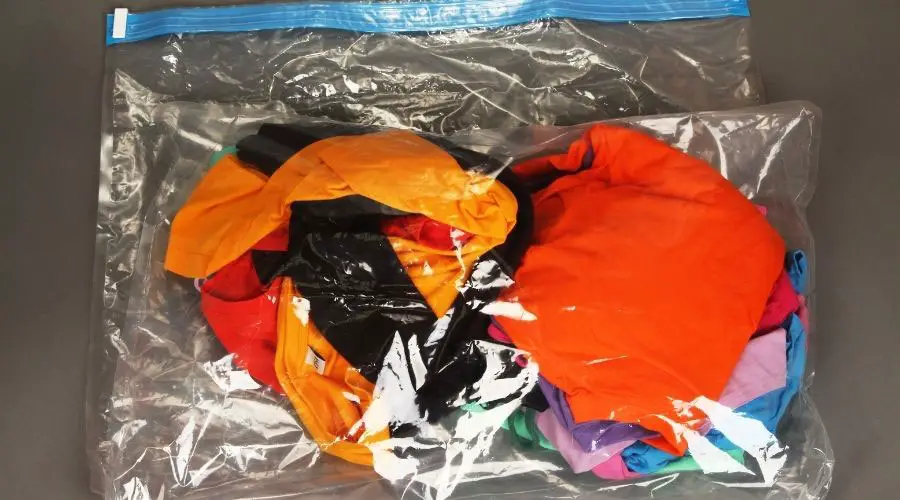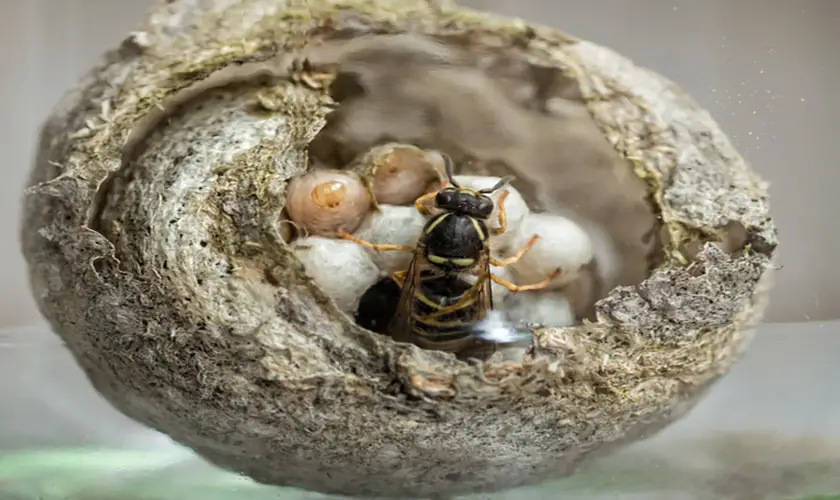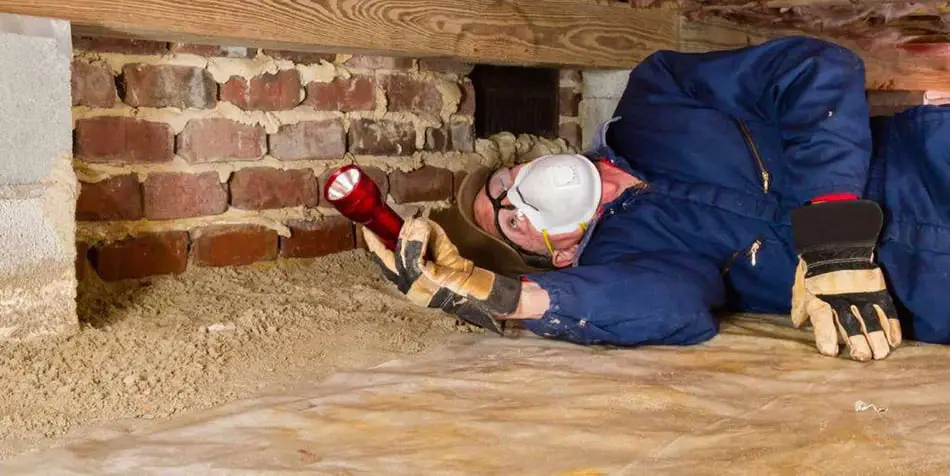
Finding moths eggs in your clothing is not a happy way to start your day! Opening your closet and finding not only a moth or two flying around but then finding eggs, larvae, or damage to your clothing or bedding will instantly send you to research how to eliminate them in a hurry!
Washing your clothing will kill moth eggs. There are various ways to wash different clothing items to ensure that the eggs and larvae have been destroyed. Cotton items can be cleaned using the hottest water setting on your machine, while you should send woolens and silks out for dry cleaning.
A moth infestation is a problem that needs to be dealt with immediately to prevent further damage to your belongings. Moths lay eggs on your clothes which hatch into larvae. The larvae eat through your clothing as they grow, causing damage to your favorite garments! Let’s find out why and what we can do to prevent pesky moths and egg problems!
Get FREE quotes from licensed pest control technicians in your area today. Whether you need spraying for ants, roaches, spiders, ticks, mosquitos, or bed bugs, We Can Help! All technicians are screened, licensed, and insured.
How Does Washing Clothes Kill Moth Eggs?
Clothes moths are attracted to natural animal-based fibers containing keratin like wool, cashmere, silk, soft leather, and fur. Any clothing or bedding items with these fibers in your home can become a breeding ground for moths.
Washing clothes and bedding in your washing machine can kill moths’ eggs and larvae. Before you clean any garment, and for the best results, check the labels on each item first to see if they have any special washing instructions.
White cotton items can be washed in your machine using an extremely hot setting. High heat kills moth eggs and larvae, an effective way to end the life cycle. If you wash your garments at home in your washing machine, be careful not to use a lower temperature as the eggs and larvae will survive any temperature less than 131 degrees Fahrenheit (55 degrees Celsius).
Other items like wool and silk could get damaged by washing in hot water in your machine – it would be wise to send these items to the dry cleaners. Make sure to let the dry cleaner know that your clothing could contain moth eggs and larvae.
If you have an infestation of moths and eggs, make sure that you destroy the moths and wash the clothing items immediately to prevent the larvae from hatching and eating through your remaining garments.
Why Do Moths Lay Eggs On My Clothes?
An adult female clothing moth has only one purpose in life – to reproduce. These moths do not eat at all, so your clothes are safe from them. If you see any moths flying around in your closet, they have either laid their eggs or are looking for an excellent spot to lay them in. They have a short lifespan and will die shortly after successfully laying their eggs.
Once the clothing moth eggs have hatched, the larvae feed on the protein keratin found in animal fibers like wool, cashmere, and silk. As keratin is found in human hair and skin and is transferred to your clothes when you wear them or onto your bedding while you sleep, the larvae will also feed on these items.
The damage is done to the clothing when the fibers contain high keratin levels, such as in the natural products we mentioned, and the larvae then chew holes into your clothes as they feast on the keratin.
Female moths will lay their eggs on your clothes and bedding so that they can feed on the keratin when the larvae hatch. The female moth will look for dark, undisturbed places like your closet to lay her eggs.
Closets in spare rooms are wonderful breeding places for moths as they are likely to be undisturbed for long periods, ensuring a safe place for the eggs to hatch and a peaceful feeding place for the larvae to hatch from the eggs.
Another excellent breeding ground for moths is clothing you hang back in your closet without washing after you have worn it. Moths love perspiration, human scent, spilled drinks on clothing, or any damp patches on your clothing, so always wash your clothing before placing back into your closet!
Damp, dark, musty, undisturbed closets containing your spare garments are all excellent places for a female moth to lay eggs!

How To Prevent Moths Laying Eggs On My Clothes
The most effective way to keep moths from laying eggs on your garments would be to ensure that all items placed back into your cupboard are clean. Wash every item after each use, even if you have only worn it for a short while.
One batch of clothes moth eggs can produce enough larvae to destroy one item of clothing, so eliminating the adult moth before she lays any eggs is the best prevention method.
If any of your garments are from the same closet as a recent infestation, wash the garments or send them for dry cleaning immediately before replacing them in the closet.
Make sure you clean your closets regularly, removing dust, dirt, and mildew. Clean each closet from top to bottom, checking for eggs in all the corners. Vacuum regularly and wash each shelf with soapy water or a vinegar solution. Spray with a disinfectant or home remedies to prevent moths from moving back in.
Remove all items from the closet before cleaning, including linen, towels, suitcases, bags, and containers. All these items should get washed before being replaced in the closet.
There are chemical insecticides that you can use in your closet to repel the moths from coming inside:
- Mothballs. For mothballs to be effective, you must seal them in a container with the item protected. As mothballs are made from chemicals, the item’s fabric may absorb the mothball smell, so be careful where you place them.
- Pesticide sprays. Find a water-based, safe to use on clothing and rugs spray. Follow the directions on the bottle to eliminate or repel the clothing moths.
See our suggestions further in this article for natural methods to prevent moths from laying eggs on your clothes.
How To Get Rid Of Clothes Moths
Preventing an infestation is the best way to deal with clothes moths, but if your preventative measures have failed and you find these pests in your closet, this is how you can get rid of them.
- Clear everything out of the closet but be careful to immediately take all items out of your house to prevent any moths from flying back into your closet.
- Shake out all the items from the closet and hang them outside in the fresh air. Either wash each item on high heat in your washing machine or send it for dry cleaning. It may have to be discarded if your garment is heavily infested with eggs or larvae.
- Wash down the closet and spray with insecticide or natural remedies. Be careful to spray down the corners of the closet and check for eggs and moths that may have been overlooked when you emptied the closet.
- Vacuum all debris, including cocoons and eggs. Seal the vacuum bag and discard it into your outside garbage.
- Carefully check for any overlooked moths and eggs before replacing your items in the closet.
How Can I Trap Clothes Moths?
Other than trying to chase them down with a fly swatter physically, you could try these methods:
1. Sticky Traps
Trap the moths with a pheromone trap which you can hang in the closet, or anywhere the moths congregate. This is a sticky trap, so once the moth has landed on it, it cannot escape. Toss the trap into the garbage once you have caught the moths.
2. Clothes Moth Traps
Clothes moth traps are an effective way to trap the moths once they are inside your closet. This small odorless trap is designed to lure and kill adult clothes moths. Once the moths have entered the trap, they cannot exit. You can safely dispose of the trap by throwing it into the garbage.

How To Kill Moth Eggs
If you find a clothes moth in your cupboard, she will probably have laid her eggs, as the moth will only live for about two weeks. The eggs will hatch between 4 to 10 days.
So how do you kill the moth’s eggs before they hatch into garment-destroying larvae? Firstly, check very carefully and ensure you find all the eggs. Remember to check corners of closets and under any carpets or mats in storage.
There are various acceptable methods for getting rid of the moth’s eggs:
1. Deep Freezing To Kill Moth Eggs
Deep freezing is guaranteed to eliminate moth eggs and larvae if the process is carried out correctly.
- Place the garment into a sealed, airtight bag – do not overstuff the bag with clothing.
- Place the bag into the deep freezer for 72 hours to a week.
- Thaw, open the bag and remove the garment (this should be done outside your house to prevent possible infestation)
- Shake out the garment.
- Wash the garments according to the manufacturer’s instructions.
- Check the garments thoroughly for eggs and larvae before placing them back into your closet.
- If eggs and larvae are still visible, brush the garment before re-washing.
2. Ironing To Destroy Moth Eggs With Heat
This is an effective method if your garment is safe to iron. If not, try a different approach.
- Set up an ironing board and plug the iron into the power socket.
- Shake the garment vigorously to remove loose eggs and larvae- you should do this outdoors.
- Pour water into the iron reservoir and switch to the wool setting.
- Place the garment inside out onto the ironing board.
- Cover the garment with a pressing cloth.
- Press the iron over the garment using steam heat.
- Shake vigorously and check that the eggs and larvae have been eliminated.
- Wash the garment according to the direction.
3. Sunlight To Kill Moth Eggs On Your Clothes
If you have time on your hands, you can try sunlight to get rid of moth eggs and larvae, but it could take a while and is not a guaranteed method.
- Hang each item of clothing onto a coat hanger.
- Find a place with direct sunlight for most of the day and hang the garment up.
- Leave the garment in the sun.
- Check often to see if the eggs and larvae have died.
- Brush the eggs and larvae off the garment and wash as directed.
4. Clothes Dryer To Kill Moth Eggs
A clothes dryer is a very effective method for eliminating moth eggs and larvae. Read the directions to see if the garment is safe to tumble-dry; if not, try a different process.
- Place the garment into the clothes dryer.
- Set the heat to hot or extra dry.
- Remove from the dryer before the cool-down cycle.
- Shake vigorously and check for leftover eggs and larvae.
- Wash the garment as directed.
5. Vacuum Cleaning To Remove Moth Eggs
When it comes to effectively getting rid of clothes, moth eggs, and larvae, a vacuum cleaner is a great tool!
- Run the vacuum nozzle over the infected area and suck up all the eggs and larvae.
- Press down hard on the garment to ensure you suck up all the eggs and larvae.
- Seal the vacuum bag and toss it in the garbage.
- Wash the garment as directed.
5. Exterminators To Kill Moths And Eggs
If you have tried all the ways and still have no success, now is the time to call the exterminators. The professionals have the correct equipment and knowledge to rid your home of moths, eggs, and larvae.
Natural Ways To Get Rid Of Moths
Many people do not like to use insecticides and disinfectants because of their toxic chemicals. Many natural remedies are available to prevent the moths from entering your home or eliminate them once they have moved in.
Before using any home remedies, follow all the above-recommended cleaning steps on what to do if you have a clothing moth egg infestation. Most of these home remedies are for repelling the moths before they lay eggs on your garments.
- Herbs. Moths hate the odors of lavender, bay leaves, cloves, rosemary, and thyme. Place dried, crushed, or powdered herbs in a cloth bag and hang them anywhere in your closet.
- Essential oils. Using the same herbs, dilute the essential oils and spray them in your closet or onto your clothes when in storage. A diffuser using these oils will also work but could be overpowering if not diluted correctly.
- Cedar balls. Cedar releases a strong smell that camouflages your clothes from clothing moths. Fill a sachet bag with cedar chips and hang it in the closet. Place cedar scented sachets in the pockets of wool items and between linens and blankets for extra protection.
- Vinegar. You can use a solution of water and vinegar to scrub down any areas where you have found eggs or larvae. Mix a solution in a spray bottle and spray over carpets and rugs.
- Baking soda. This is an effective remedy for using around the home. Mix 1 teaspoon baking soda into a cup of water and pour into a spray bottle. Spray across closet shelves but not directly onto your garments as they could stain.

How To Store My Clothes To Protect Them From Moths
We all store clothes that we do not wear every day. Some wear during different seasons of the year, some are used for sports, and others are kept for sentimental reasons. All stored clothes should be washed and packaged correctly to prevent them from being attacked by various bugs like clothes moths.
The clothes moths’ larvae cannot eat through plastic or hard substances, so your favorite garments should be safe if stored correctly.
Before storing your clothes, each item should be washed according to the manufacturer’s directions and neatly ironed if recommended.
Once washed and ironed, try the following storage methods:
1. Ziploc Bags To Seal Your Garments
Place each cleaned garment into a Ziploc bag. Don’t overfill the bags. Place a cedar or lavender sachet into the bag for added protection from clothes moths. If you can, suck the air out of the bag. This will flatten the sack making it easier to store.
Place the Ziploc bags into your closet for storage. Hang cedar or herb-filled bags in the closet and spray all walls and surfaces with a vinegar solution.
2. Plastic Bins To Store Your Clothing
Place your folded garments directly into plastic bins. Make sure that the garments are not tightly packed into the container. Place cedar sachets into the bin. The crate’s lid should fit tightly to prevent moths from finding a way in. Store the bins in a room or a closet that is not damp. Spray down all surfaces with a vinegar solution
3. Storing Hanging Garments In Garment Bags
Place your jackets and suits into garment bags if you have extra closet space. Hang a cedar bag in your closet to repel moths. Remove the garments from the bags regularly, give them a good shake and replace them with the garment bags.
Conclusion
Moths can enter your home in several ways, so before bringing any second-hand items into your home, check them for eggs, larvae, or moths. Tell-tale signs are small holes, feeding tubes, or webbing left behind from moths.
Trying to get rid of moths once they have found their way into your home could be impossible, so follow our recommendations to keep them out and away from your garments.
Always clean infected areas thoroughly and store your favorite items correctly to keep them safe from moths.
Get FREE quotes from licensed pest control technicians in your area today. Whether you need spraying for ants, roaches, spiders, ticks, mosquitos, or bed bugs, We Can Help! All technicians are screened, licensed, and insured.








